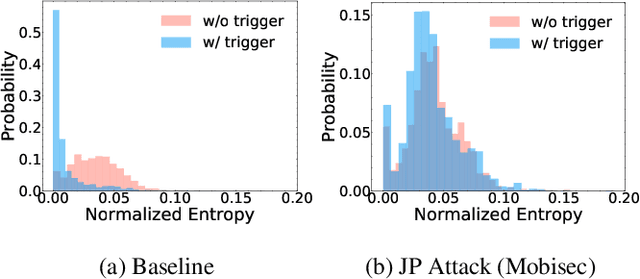Jigsaw Puzzle: Selective Backdoor Attack to Subvert Malware Classifiers
Paper and Code
Feb 11, 2022



Malware classifiers are subject to training-time exploitation due to the need to regularly retrain using samples collected from the wild. Recent work has demonstrated the feasibility of backdoor attacks against malware classifiers, and yet the stealthiness of such attacks is not well understood. In this paper, we investigate this phenomenon under the clean-label setting (i.e., attackers do not have complete control over the training or labeling process). Empirically, we show that existing backdoor attacks in malware classifiers are still detectable by recent defenses such as MNTD. To improve stealthiness, we propose a new attack, Jigsaw Puzzle (JP), based on the key observation that malware authors have little to no incentive to protect any other authors' malware but their own. As such, Jigsaw Puzzle learns a trigger to complement the latent patterns of the malware author's samples, and activates the backdoor only when the trigger and the latent pattern are pieced together in a sample. We further focus on realizable triggers in the problem space (e.g., software code) using bytecode gadgets broadly harvested from benign software. Our evaluation confirms that Jigsaw Puzzle is effective as a backdoor, remains stealthy against state-of-the-art defenses, and is a threat in realistic settings that depart from reasoning about feature-space only attacks. We conclude by exploring promising approaches to improve backdoor defenses.
 Add to Chrome
Add to Chrome Add to Firefox
Add to Firefox Add to Edge
Add to Edge